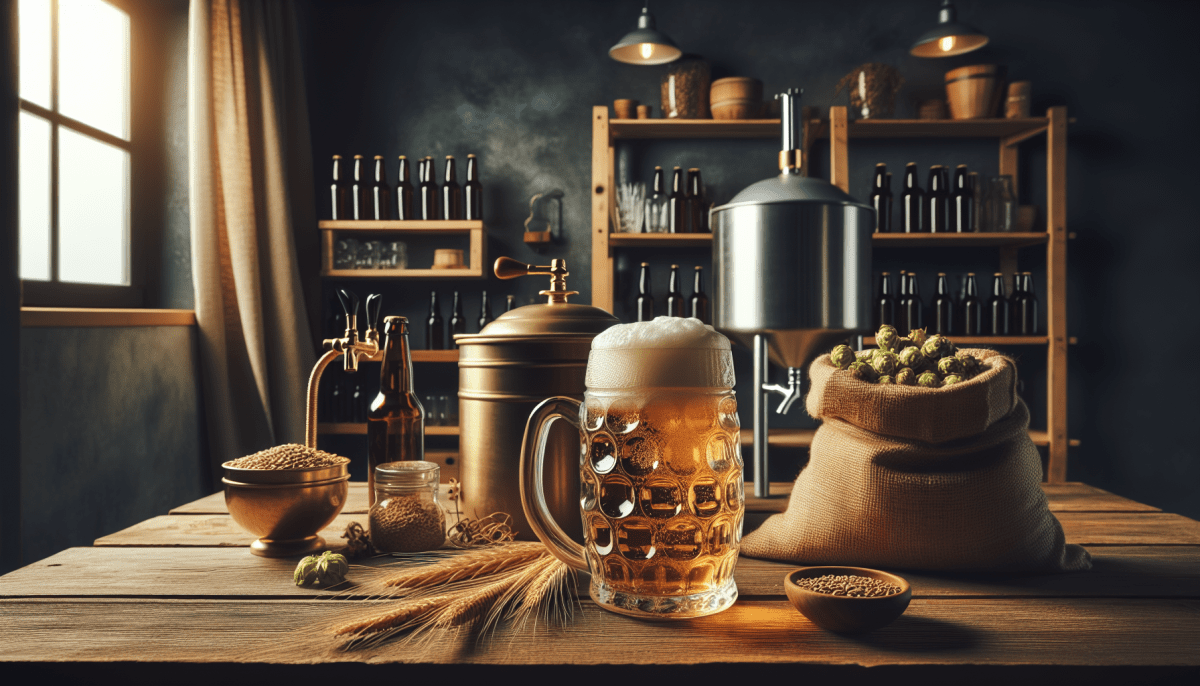Before you start brewing your first batch of beer, it’s important to gather all the essential supplies. Home brewing can be a fun and rewarding experience, but having the right tools will make the process easier and more enjoyable. Here’s what you’ll need to get started.
First, invest in a quality brewing kettle. A large pot, generally at least 5 gallons in size, will allow you to boil the ingredients thoroughly. Stainless steel is a great choice because it’s durable and easy to clean. Next on your list is a fermentation vessel. This can be a glass carboy or a plastic fermentation bucket. Both options do the job well, but a glass carboy allows you to easily monitor the fermentation process.
You'll also need some basic ingredients, like malt extract, hops, and yeast. Malt extract is the backbone of your brew, while hops will provide the bitterness and aroma. Yeast is essential for fermentation, turning the sugars in the malt into alcohol. Don’t forget to pick up some priming sugar too, which is used for carbonation during the bottling process.
Don’t overlook the need for sanitation supplies! Keeping everything clean is crucial to ensuring your beer turns out great. Look for a no-rinse sanitizer, which will save you time and hassle. Lastly, get a hydrometer to measure the specific gravity of your brew. This handy tool will help you track the fermentation process and determine your beer’s alcohol content.
Step by Step Brewing Process
Brewing your own beer at home is a rewarding and fun experience! Follow these simple steps to create a delicious batch of your very own brew. The process may seem daunting at first, but with practice, you'll be serving up pints with ease!
First, gather your ingredients and equipment. You'll need malted grains, hops, yeast, and water. Additionally, make sure you have essential brewing tools like a brew kettle, fermentation vessel, thermometer, hydrometer, and bottles. Once you have everything, it's time to start brewing!
Next, you'll need to mash the grains. This involves steeping the grains in hot water to extract the sugars. Heat your water to the right temperature, then add your grains and allow them to steep for about an hour. After mashing, you'll want to separate the liquid, called wort, from the grain husks, which can be done by straining it through a sieve or using a brew bag.
Once you have your wort, bring it to a boil and add your hops according to your recipe. Hops add flavor and bitterness to balance the sweetness of the malt. After boiling, cool the wort quickly to a temperature suitable for fermentation. You can use an immersion chiller or an ice bath to do this. Once cooled, transfer the wort to your fermentation vessel, pitch the yeast, and seal it up!
Finally, let your beer ferment for about one to two weeks, depending on the recipe. During fermentation, you'll notice bubbling as the yeast converts sugars into alcohol. After the fermentation period, it's time to bottle! Carefully siphon the beer into clean bottles, add a small amount of sugar to each for carbonation, and cap them. Now, all you have to do is wait a few more weeks for the flavors to develop, and then you can enjoy your homemade brew!
Tips for Perfect Home Brew
Home brewing can be an exciting and rewarding experience, especially when you're aiming to create that perfect blend. Here are some helpful tips to ensure your home brew turns out just the way you envision it. First and foremost, cleanliness is key. Always sanitize your equipment before and after use. Even a tiny amount of bacteria can spoil your brew, so make it a habit to keep everything squeaky clean.
Secondly, pay attention to your ingredients. Use high-quality grains, hops, and yeast. The freshness of these ingredients can greatly affect the flavor of your brew. Don't hesitate to experiment with different types of hops or malts to find a combination that excites your palate. Remember, brewing is an art as much as it is a science!
Temperature control is another crucial factor. Different yeast strains operate best at different temperatures, so it’s important to keep your fermentation environment stable. Use a thermometer and monitor the temperature closely. If necessary, consider investing in a fermentation chamber or using temperature control wraps to maintain the perfect brewing conditions.
Finally, patience is a virtue when it comes to brewing. Don't rush the process—whether it's fermentation or conditioning. Give your beer the time it needs to develop its full flavor. Often, the best brews come from those who allow the process to unfold naturally, so take a moment to enjoy the journey while you wait for your home brew masterpiece to be ready!
Enjoying and Sharing Your Creation
Once your homebrew is ready, it’s time to enjoy and share the fruits of your labor! After weeks of waiting and careful monitoring, there’s nothing quite like the thrill of pouring a glass of your very own creation. Take a moment to appreciate the color, the aromas, and the nuances of flavors that reflect your brewing choices. Whether it’s a crisp lager, a rich stout, or a refreshing IPA, savor each sip and feel proud of what you’ve achieved.
Sharing your homebrew with friends and family is one of the most rewarding aspects of the brewing journey. Consider hosting a tasting party where everyone can sample your different brews. Provide tasting notes and engage in lively discussions about the flavors, the brewing process, and future projects. This not only builds a sense of community but also allows you to gain invaluable feedback that can help you refine your brewing skills.
Don’t forget to capture these moments! Take photos of your brewing sessions, the final product, and those precious shared moments with loved ones. Creating a scrapbook or a digital album of your brewing adventures can serve as a wonderful keepsake and a source of inspiration for future batches. Plus, sharing your experience on social media or brewing forums might inspire others to start their own homebrewing journey!
Participating in local brewing clubs or competitions can also enhance your enjoyment. Engaging with fellow enthusiasts allows you to exchange tips and tricks, discover new recipes, and celebrate each other’s achievements. Sharing your passion with a community can motivate you to experiment and push your brewing boundaries, turning each batch into a delightful adventure.



